Have you ever felt like the air gets drier in winter? It’s not just in your head—it’s real. Winter air lacks moisture, and heating systems can make it even drier. This can lead to dry, itchy skin, which isn’t pleasant. Luckily, Buying a room humidifier can help by adding moisture to the air. They make your home cozier during cold months and are good for your skin.
In the absence of a central humidifier in your heating system, Buying a room humidifier is an excellent alternative for bringing moisture to your home’s dry air. Moist air has several functions in the respiratory system, including relieving cold and bronchitis symptoms, dry sinuses, nosebleeds, and chapped lips. On the other hand, improper use of humidifiers may promote the development of mold and bacteria, which can result in health issues. That is why it is essential to choose the appropriate humidifier according to your requirements.
1. Operating Design
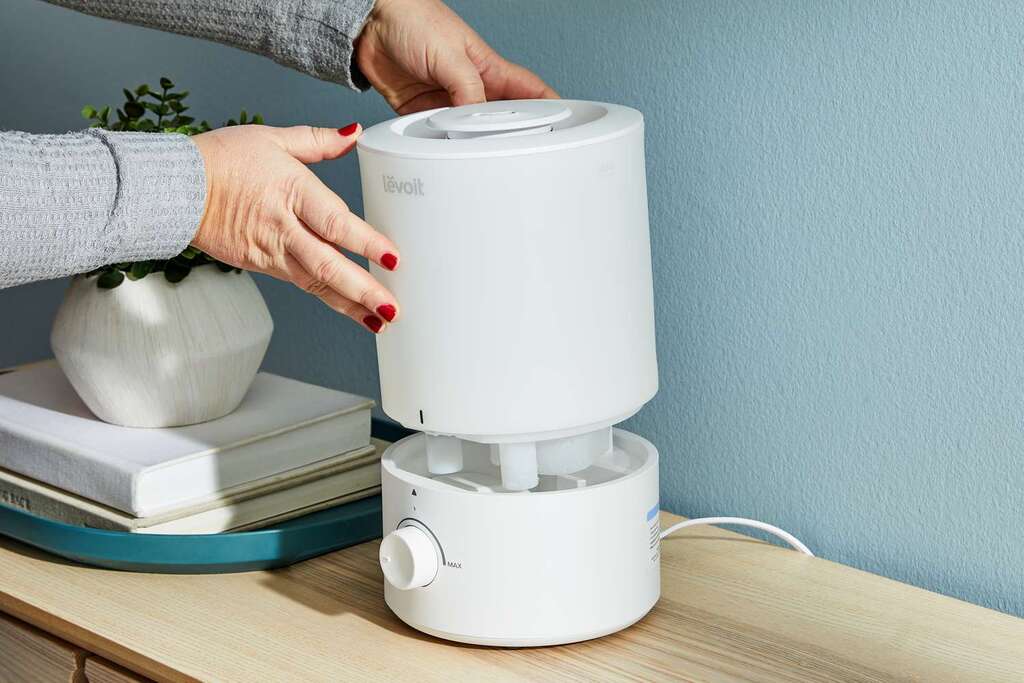
Choosing the right humidifier should be your first priority. There are essentially four distinct types of room humidifiers, and each one adds moisture to the air in its own special manner.
1. Evaporative Humidifiers
Humidifiers that rely on evaporation to disperse moisture into a space do so by use of a fan that forces air through a moist wick, filter, or belt. They run silently and generate a refreshing mist, but you have to clean them often to keep mold and germs at bay. Not to mention, they’re cheap.
2. Impeller Humidifiers
An impeller humidifier’s mechanism consists of a motor-driven revolving disk that sprays water onto a diffuser, which in turn splits the water into microscopic droplets that float in the air. These cool-mist humidifiers might be a little too loud for some people’s liking.
3. Ultrasonic Humidifiers
By using ultrasonic frequency vibrations to move two ceramic plates, ultrasonic humidifiers produce a refreshing mist. Although they work very well, they have the potential to emit fine dust into the air. This dust might land on surfaces and aggravate allergies for those who are already sensitive.
4. Steam Vaporizers
Steam vaporizers work by heating water to a point where it may be turned into steam and then released into the air around the user. They just add clean moisture. However, be cautious if you have children or pets who might get burned if the humidifier is accidentally knocked over.
2. Cool Mist Vs. Warm Mist
Whether you like a warm or cold mist will likely influence your humidifier selection. There are still benefits to using warm mist humidifiers, which used to be very popular. They filter the water to remove any bacteria or mold before dispersing the moisture into the air. In addition, they offer:
- High humidity
- Works well with medicinal products
- Silent functioning devoid of an internal fan
- Extra insulation for chilly climates
A major selling point of cool mist units is the fact that they do not cause burns, making them ideal for households with children and animals. Some expensive models even purify the air as they moisten it. Their focus on health and safety makes them worth a look. There are additional cool mist units:
- Compared to warm mist ones, they save electricity
- Make the air cooler, which is perfect for those hot days
- In general, they have a wider coverage than warm mist machines
3. Humidifier Size and Capacity
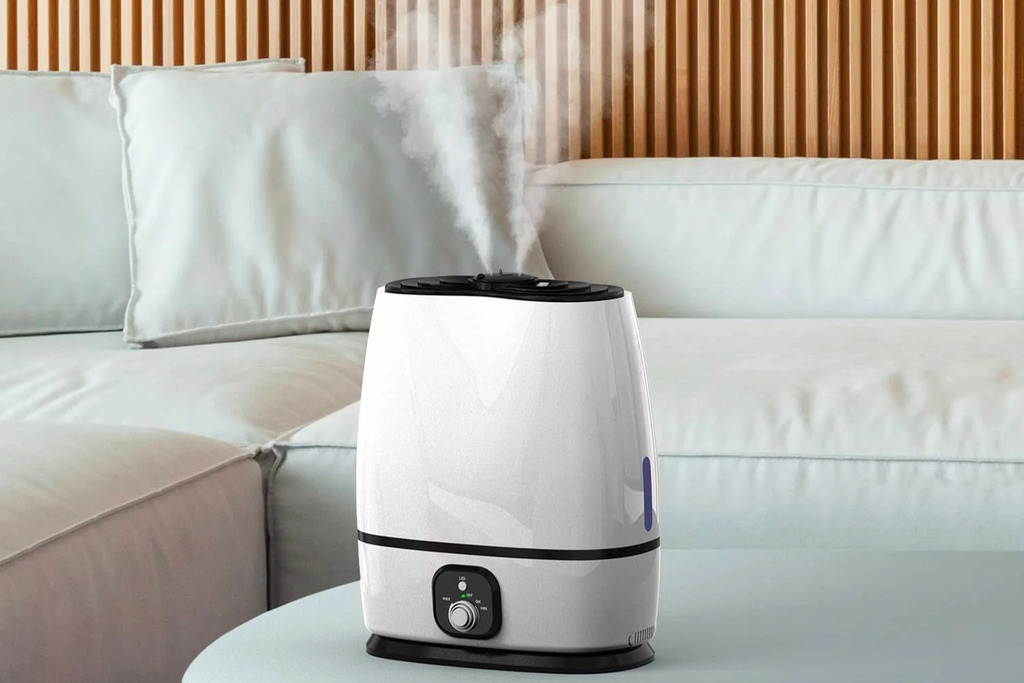
There is a wide range of sizes available for room humidifiers. A humidifier’s capacity to retain water, its daily water release rate, and the area it can efficiently cover are all methods to determine its size.
You can find little versions that contain around a quarter of a liter of water on the market. You can charge them with a USB cable, and they’re tiny enough to fit in your car’s cup holder. The largest types are the console varieties, which can discharge 12 gallons of water into the air daily and have a capacity of up to 6 gallons of water.
These massive ones can effectively serve as whole-house humidifiers, covering an impressive 3,600 square feet of area. The capacity is often shown on the box of humidifiers; however, it should not be confused with the quantity of moisture that the device emits. The frequency of refills is mostly determined by the tank size.
Opting for the largest one can seem to be a wise choice, but it can have unintended consequences. Spotting condensation on your windows from a humidifier that’s too big for the space is a certain way to invite mildew and germs to set up shop.
Make sure to take accurate measurements of your space so you can choose the perfect model. Bedrooms and living areas often work best with humidifiers that are 700 square feet or less. Homes with expansive floor plans and plenty of natural light are ideal for the larger ones.
4. Control Precision
Consider the control choices as well while choosing a portable room humidifier. Certain humidifiers are basic, with just two fan speeds; others have more sophisticated capabilities, such as a digital hygrometer that indicates the relative humidity in the room and a humidistat that you can set to maintain a certain humidity level. These automated capabilities are far more useful and well worth the extra money if you don’t want to manually adjust the settings and monitor the moisture levels.
In general, humidifiers with digital controls are more accurate and convenient than those with traditional mechanical knobs and switches.
5. Runtime
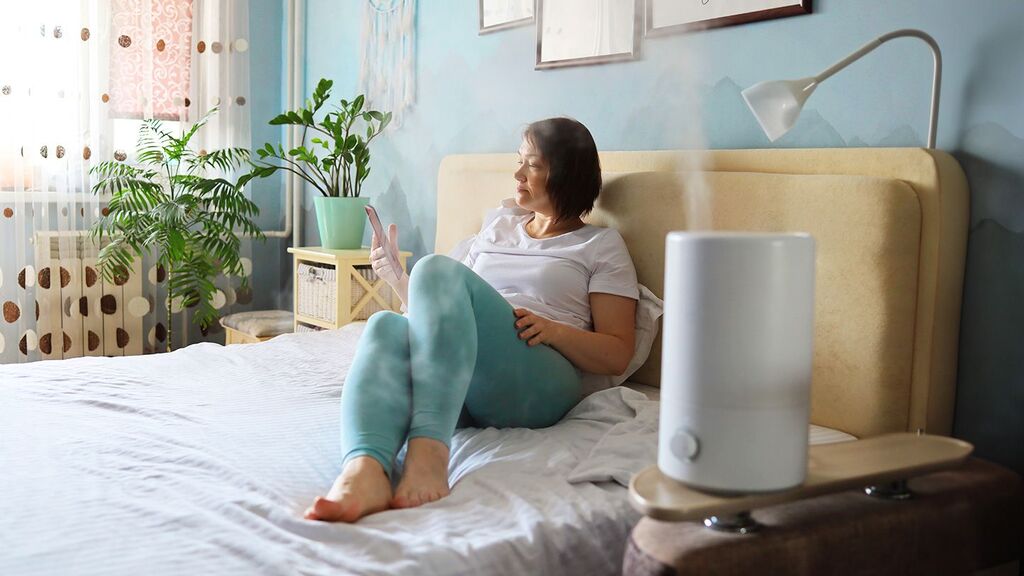
Several factors determine how long a humidifier lasts between refills, beginning with the size of its water tank. There are many sizes available for portable room humidifiers, spanning from one liter to five gallons or more. A smaller 1-liter type may need refilling every eight hours or so, while a 2-gallon one will normally operate on low for 12 hours or more.
The runtime will decrease significantly if you set the settings too high or if the air is too dry where you are. The product’s description or packaging will usually indicate how long the humidifier will last before requiring a refill.
6. Ease of Handling and Maintenance
While some water tanks can be a little tough to remove and restock, others are simpler. Consider your ability to support the weight of a completely full tank. Examine the humidifier closely to observe how easily the water tank detaches from the base.
Find out whether the model requires filter adjustments as well. If so, see whether it’s simple to locate and change the filters. When you purchase a new humidifier, it’s a good idea to get a few additional filters since proper maintenance is crucial to maintaining clean and healthy air.
Wick filters, used in evaporative models, collect dust and other particles. In order to further reduce allergies, some units even have two stages of filtration. White dust from water mineral deposits might sometimes land on your furniture, but specialized filters can collect these deposits and keep the dust in the air to a minimum. Using distilled water in your humidifier may help stop the accumulation of minerals and scale if your water is hard.
Note that all humidifiers need regular cleaning in order to stop the growth of germs. Examine the product details, as several versions come with dishwasher-safe water reservoirs that simplify cleaning. Additionally, you will need to routinely give the unit’s base a thorough cleaning.
7. Noise Level and Settings
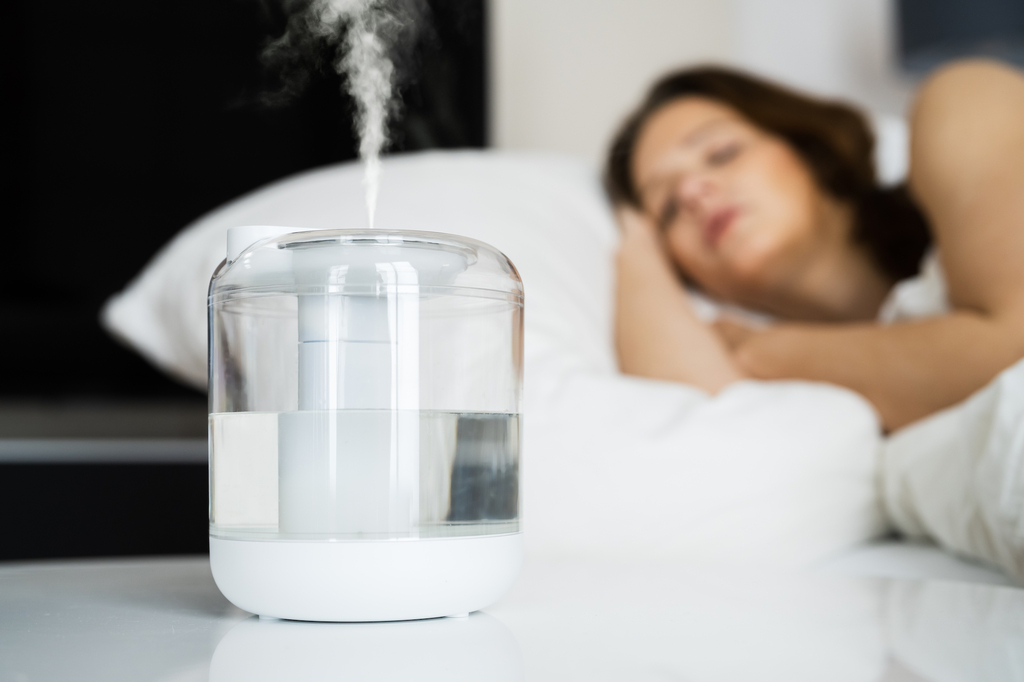
Your humidifier can make some noise while it’s operating, so if you want to use it in a bedroom, it’s a good idea to choose one with a quiet or low setting for usage at night. These models aren’t really “silent.” They may still produce some noise, and that’s sometimes a good thing. A humidifier’s gentle hum can be soothing and useful in canceling out other sounds in your house.
Ensure that there are at least two noise settings on the device: high and low. The reason ultrasonic humidifiers are considered the quietest is that they discharge moisture in the form of a fine mist rather than boiling water, which may produce a hissing sound.
8. Safety and Health Features
Numerous variants are equipped with safety mechanisms that cause the device to shut off on its own when the water tank runs out. For safety purposes, this is crucial. It’s wise to enquire about this feature with the retailer if it’s unclear from the box. If not, you’ll need to take caution to turn it off by yourself when the water runs out.
If the hygrometer in your humidifier is integrated, it will shut off on its own when the air reaches the desired humidity level. By doing this, the air is kept from becoming too wet, which might encourage the formation of mold. Even further elements, such as UV lamps or unique coatings in the tank that destroy germs in the water, are included in certain cool mist humidifiers. Additionally, some models feature a gentle glow that works very well as a nightlight.
9. Humidifiers Vs. Diffusers
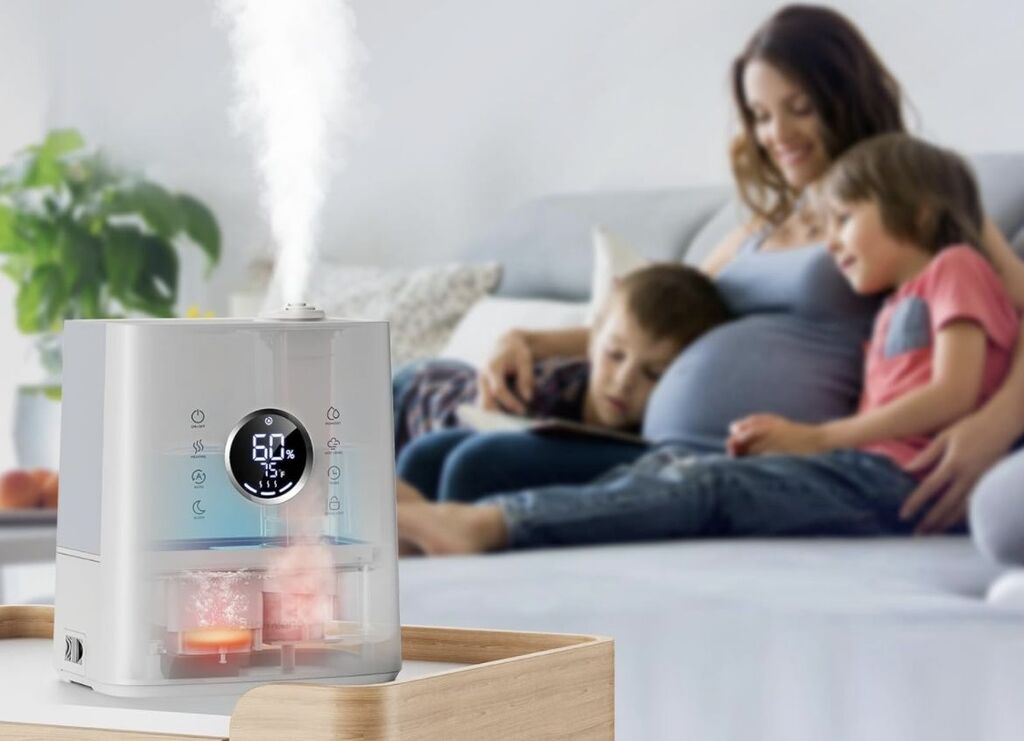
Due to their similar appearances and shared effects on the surrounding air, people often confuse humidifiers with diffusers. Here’s how they vary, though:
- A diffuser is a little appliance designed to disperse essential oils for aromatherapy into the air and has a smaller tank. It also slightly increases the air’s moisture content.
- In contrast, a humidifier is a larger appliance designed to maintain an equilibrium of moisture in the air.
- Some hybrid humidifiers may provide you with aromatherapy in addition to humidifying the air; these models have areas for scented oils.
Choose a diffuser if you wish to spread the benefits of essential oils for healing. Choose a humidifier instead, if you want to raise the humidity in a space to take advantage of the health advantages of wet air. In case you want both, a hybrid humidifier is the best option.
10. Warranty
The standard warranty for room humidifiers is one year. However, several models have longer guarantees that allow for product replacement for up to two or three years after purchase. These humidifiers with extended warranties are sometimes a little more expensive. In actuality, humidifiers are often trouble-free appliances, and it’s rare for them to malfunction within the warranty term.
Purchasing an extended warranty for a humidifier at the time of purchase is often not a wise decision. Due to the fact that most extended warranties expire far before the item is anticipated to break, replacing a portable humidifier ultimately will typically be more economical than purchasing an extended warranty. Furthermore, it generally makes more sense to buy a new humidifier instead of trying to fix a damaged one in the long run.
11. Budget
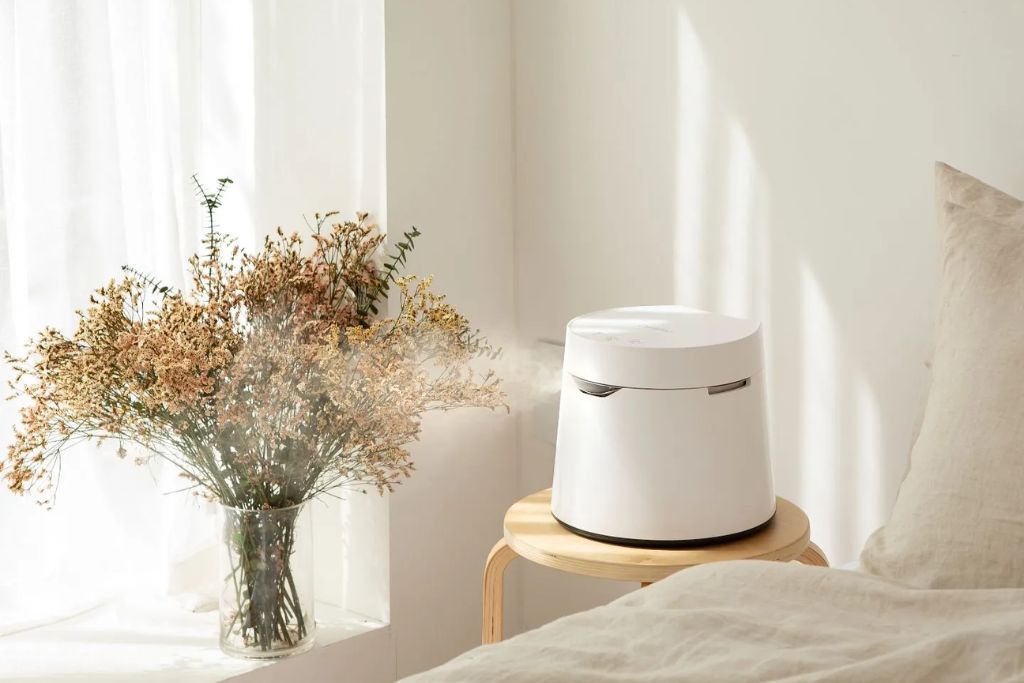
The price range for a decent humidifier can range from $30 to $300, but if you’re ready to pay more, the options are almost endless. Choose a smaller unit at the lower end of the pricing range if all you need is moisture added to a certain area of your house. There are many great solutions there that will work well.
However, pay attention to the capacity if you’re looking for the best model possible with all the bells and whistles. Consider purchasing a whole-house humidifier as well, particularly if you want to save money over time. However, keep in mind that these whole-house humidifiers are somewhat expensive.
Additionally, budget a sizeable sum if you want to install a furnace humidifier to significantly enhance the quality of the air within your home. These systems are not inexpensive.
My Two Cents
In the dry winter months, a portable humidifier is a simple but efficient way to keep the air in your house wet. Besides lowering heating expenses, this also helps improve air quality, which is good for your health. In addition to providing several advantages with little maintenance, they are also simple to clean. Find one that works for you by investigating the many options. There must be a choice that suits you well.
While Buying a room humidifier Make sure to verify the warranty in case your humidifier is damaged or stops operating. You can then arrange to have it replaced. Humidifiers often come with a guarantee of at least a year, and you may even be able to return it to the store you originally purchased it from if they accept returns. Should this not be the case, it is imperative that you contact the manufacturer.
Explore Further:

